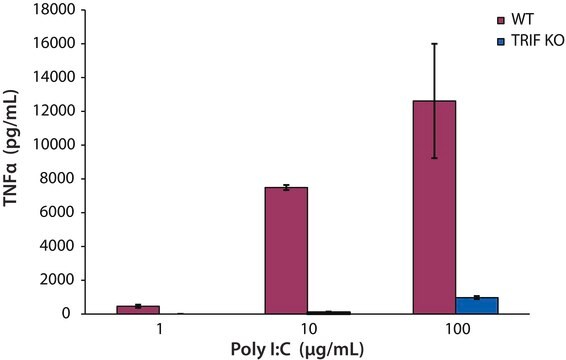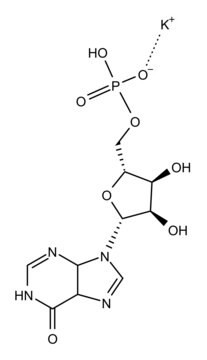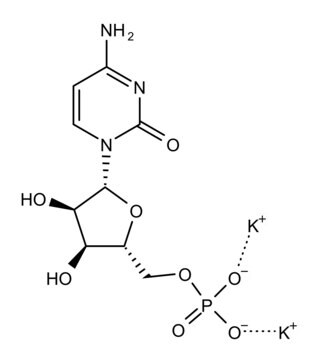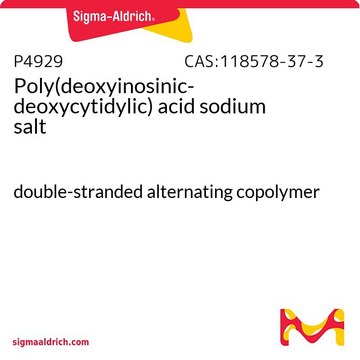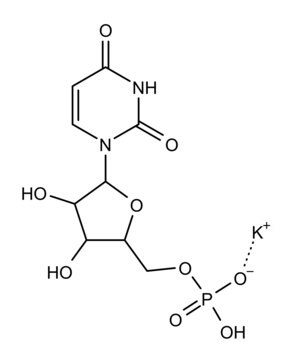P9582
Polyinosinic–polycytidylic acid potassium salt
with buffer salts, TLR ligand tested
Sinônimo(s):
Poly (I:C), Poly(I) • Poly(C)
About This Item
Produtos recomendados
Nível de qualidade
Ensaio
≥99% (less than 1% free nucleotides, TLC)
forma
lyophilized powder
composição
Poly(I) • Poly(C), 10% (balance buffer salts as sodium chloride and sodium phosphate)
condição de armazenamento
desiccated
temperatura de armazenamento
−20°C
Procurando produtos similares? Visita Guia de comparação de produtos
Aplicação
Ações bioquímicas/fisiológicas
Embalagem
Outras notas
Nota de preparo
Código de classe de armazenamento
11 - Combustible Solids
Classe de risco de água (WGK)
WGK 3
Ponto de fulgor (°F)
Not applicable
Ponto de fulgor (°C)
Not applicable
Equipamento de proteção individual
Eyeshields, Gloves, type N95 (US)
Certificados de análise (COA)
Busque Certificados de análise (COA) digitando o Número do Lote do produto. Os números de lote e remessa podem ser encontrados no rótulo de um produto após a palavra “Lot” ou “Batch”.
Já possui este produto?
Encontre a documentação dos produtos que você adquiriu recentemente na biblioteca de documentos.
Os clientes também visualizaram
Nossa equipe de cientistas tem experiência em todas as áreas de pesquisa, incluindo Life Sciences, ciência de materiais, síntese química, cromatografia, química analítica e muitas outras.
Entre em contato com a assistência técnica